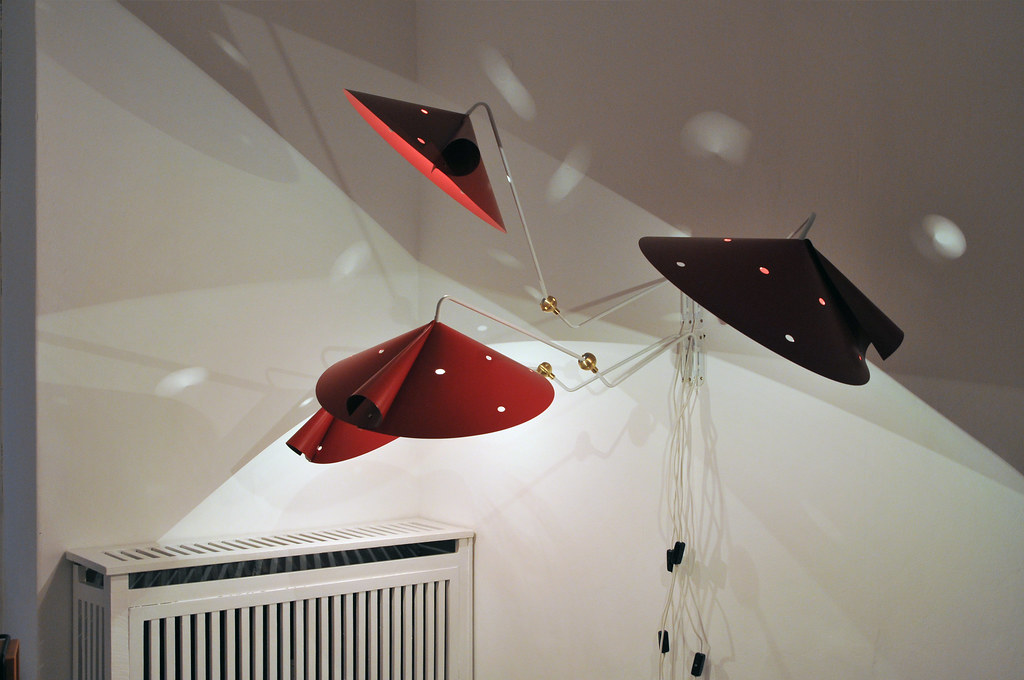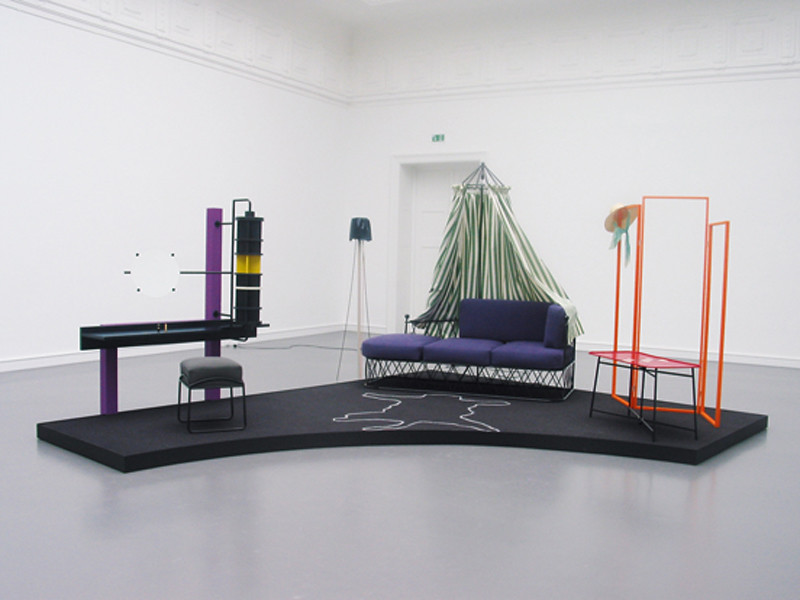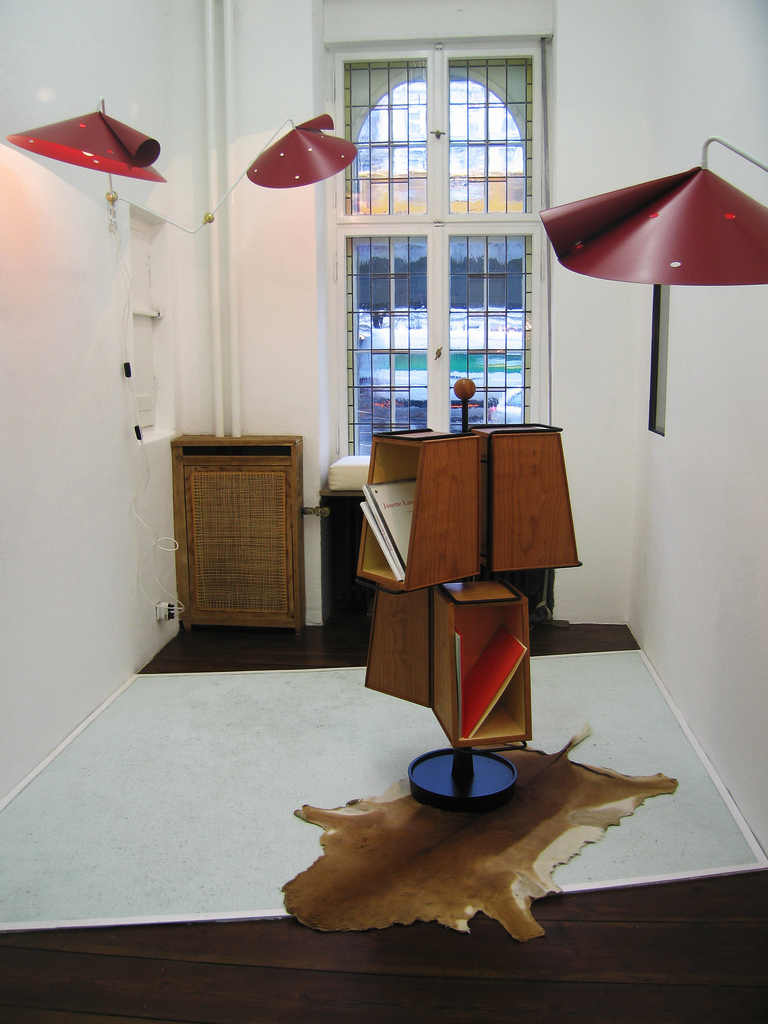"Michel and Nairy Baghramain had been in a New York bookstore on a rainy day and found the only monograph on Janette Laverrière's work. Nairy thought it seemed to be strange that the works started in the 1930s and continued to the then present day. "
-Dominic Eichler & Michel Ziegler of SILBERKUPPE

"But now I don’t want to make something useful – what I want is to tell a story. "
- Janette Laverriere
Some stories slowly unfold themselves over time. Rodney Hill sent me an email with an photograph of these captivating, fluttering red lamps, casting transient shadows upon the walls. Along with the image was an address to a Berlin gallery, to which I immediately wrote. Dominic Eichler & Michel Ziegler of SILBERKUPPE in Berlin recently showed Janette Laverrière's first time productions, that were first drawn out in 1952. Janette recently passed away at the age of 102. 50 years later, these works appear back into our world, yet there is a story that comes along with these works that is much deeper than aesthetic adoration.
In order to understand her work and Janette's story, please read this interview published in Frieze Magazine in 2009. Janette was criticized for not being commercial enough, and eventually dedicated her life to making what she has called "useless objects."
- David John

‘Entre deux actes: Loge de comédienne’ (Between Two Acts: An Actress’ Dressing Room) 2009
"Michel and I were introduced to her through the fantastic artist Nairy Baghramain. Michel and Nairy had been in a New York bookstore on a rainy day and found the only monograph on Janette Laverrière's work. Nairy thought it seemed to be strange that the works started in the 1930s and continued to the then present day. So she researched, and she eventually requested an appointment to meet Janette and they became friends. After that they made some shows together and Janette called them spirit sisters.
In that time there was talk of making it possible to produce some of her unrealized designs - it was Janette's wish that this happened and before she passed away we were entrusted with three licenses to produce editions - the lamp - chapeau chinois, and the bookshelf are both from the early 50s. At a later date we have a fab 'whisky chair' to do too. At that time Janette was in the inner circle of postwar designers active in Paris. One of the things that interested Nairy and us was her proto-feminist viewpoint and the way that influenced her work - often meaning she didn't tow the strict modernist diet. See for example this reworked interior for an actress initiated and realized by Nairy for a show at Stattliche Kunsthalle Baden Baden (see above).
Maybe this is a good start?"


Silberkuppe began in May 2008, where they had one room for a year, did four institutional shows and took a second smaller room in Berlin. I spoke with Dominic Eichler & Michel Ziegler about their space, and the works of Janette Laverrière that were shown earlier this year in 2012.
What does your gallery focus on?
Silberkuppe has an intentionally diverse program of international contemporary artists - some of whom since just recently we started to represent - as well as many distinguished guests listed on our website. There are representatives of different generations and cultural backgrounds. We like to speak of the future and right now the future means a solo painting show by Leidy Churchman in March and a drawing and installation show with the eminent UK feminist and artist Margaret Harrison at the end of April.
How many of these lamps with be produced?
The agreement with Janette and her estate is for a numbered unlimited edition of the lamp. The first batch are numbers 1 -12.
Where are these lamps made, and how did you go about sourcing who would make these lamps?
While Janette was alive we produced a limited edition of a different variation of the lamp. and she also worked with a Berlin specialist art production firm. Janette Laverrière saw the lamps back then and was very happy. The new editions are from a design drawing from 1952, the production is now - so 1952 / 2011. Actually Janette never produced the lamp herself, so like many of her designs it remained unrealized - this was the main reason she wanted us to finally produce for her. So they are not reproductions but rather new/ first time productions that just took a while to happen!
What can you tell me about the Whisky Chair?
We are fond of it because it's quite in traditional in a sense, and a masculine chair. But one knowing Janette, a woman can easily take over and occupy, and looks to us to have been in part inspired by the designer Ruhlman - for whom Janette worked as a young designer and learned the trade.
Why is Janette's work important to you and to the continued conversation of postwar modernism?
Janette was part of the circle of most important designers working in postwar Paris and imagine there is only one other woman who is well known from this scene. In design history she was among the first to use metal tubing for indoor furniture and also the edge of multi-ply as a decorative feature.
The artist Nairy Baghramian is to thank for the art world introduction to Janette late in her life. Nairy and Janette collaborated on a number of exhibitions - in this context Janette's work is appreciated for its design aesthetics but also because of her political convictions as a cultural producer working nearly throughout the 20th Century. We consider Feminism(s) unfinished business and a key source of inspiring relevant discourse. Part of this means addressing the historical record.
A little story: when Nairy Baghramian was talking to Janette about reconstructing Janette's 1947 interior for an actress, Janette admitted she thought it odd because it was this interior which had got her criticized when shown at a design fair by the male modernists for being too subjective, narrative and things like that - i.e. the room had images of women and was in a sense gendered and was a design by a woman for a woman.
- end.
"Born in 1909 in Switzerland, Janette Laverrière studied in Basel at the Allgemeine Gewerbeschule, where she learned the fundamentals of drawing and decoration. After training in her father’s architecture practice, she designed her first pieces of furniture in the late 1920s and until 1945 collaborated on designs with her first husband, Maurice Pré. Involved in politics all of her life, Laverrière joined the Communist Party in 1945. Since then she has designed rooms, affordable furniture and “useless” objects. She began making mirrors in 1936—an interest that has continued throughout her career. From Laverrière’s earliest work on, her close study of the objects of domestic life has frequently led her to create works of art at a far remove from mere functionality and unencumbered by the wishes of her clients."
- bio taken from here.
SILBERKUPPE
Skalitzer Strasse 68
10997 Berlin
---------------------

